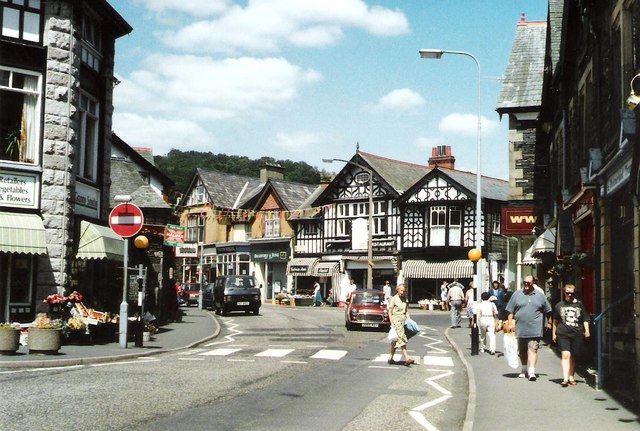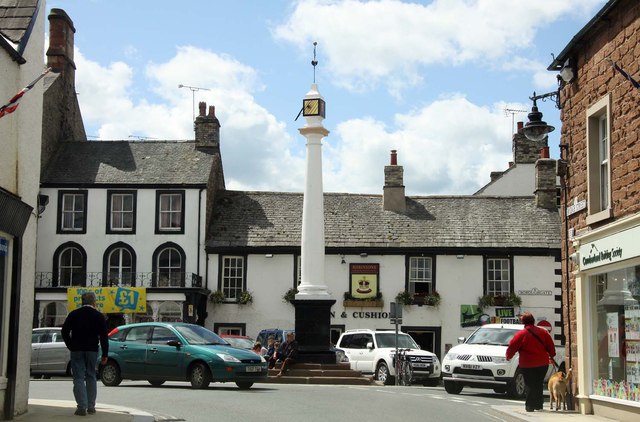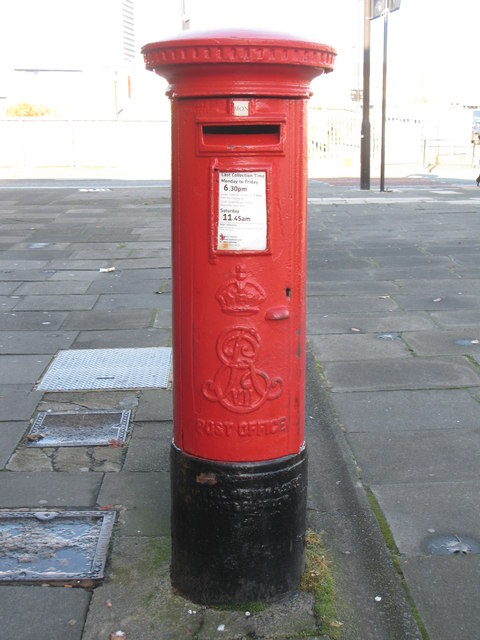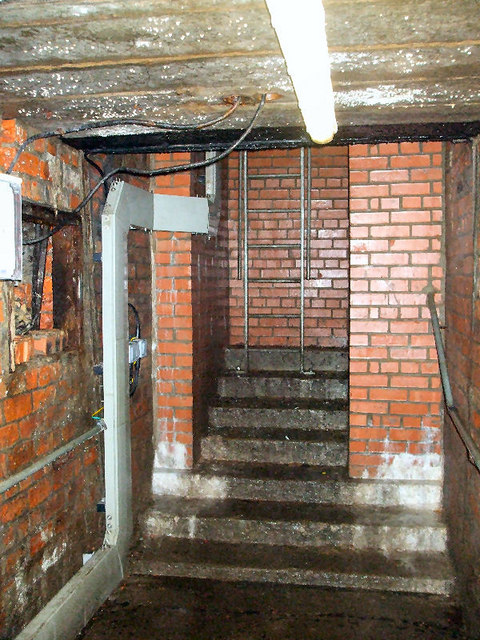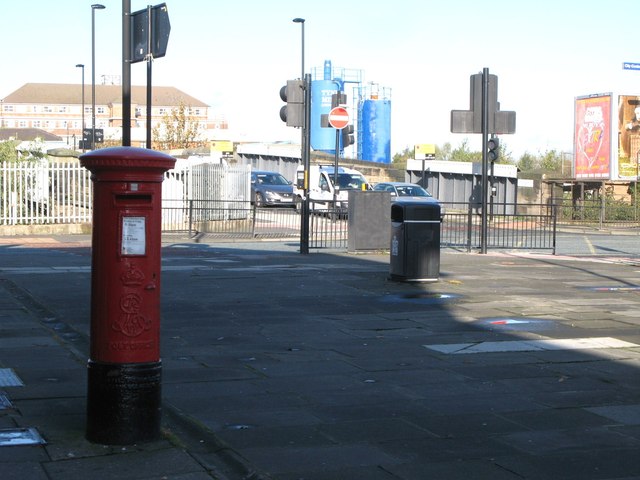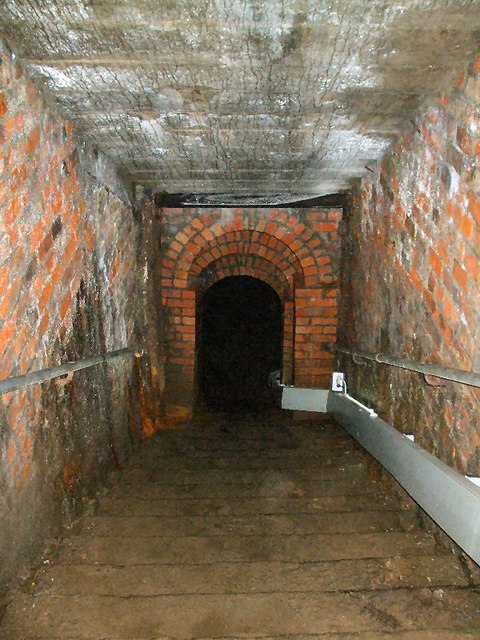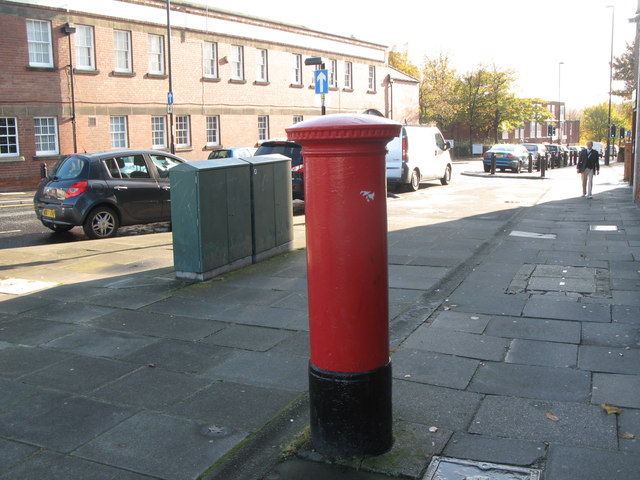Topics > Windermere > Westmorland and Furness > Appleby-in-Westmorland > Appleby, 1848
Appleby, 1848
APPLEBY, an incorporated market-town, having separate jurisdiction, and formerly a representative borough, locally in East ward, union of East ward, county of Westmorland, of which it is the chief town, 274 miles (N.N.W.) from London; containing 1,075 inhabitants. This place is thought, but on uncertain grounds, to have been a Roman station: Camden, from a similarity of name, erroneously calls it Aballaba; while Horsley considers it to have been the Roman Galacum. A Roman road passed near it from Langton, on the east, to Redland's Bank on the north-west; and some antiquities of the Romans have been discovered in the vicinity. It has long been the head of a barony, sometimes called the barony of Westmorland; the rest of the county, which forms the barony of Kendal, having been anciently included in Lancashire and Yorkshire. The barony was granted by the Conqueror to Ranulph de Meschines, whose son Ranulph, having in his mother's right succeeded to the earldom of Chester, gave it to his sister, the wife of Robert d'Estrivers. It afterwards came into the possession of the Engains and Morvilles, and was seized by the crown, in consequence of the participation of a member of the latter family in the murder of Thomas à Becket. King John bestowed it, together with the "Sheriffwick and rent of the county of Westmorland," upon Robert de Veteripont, Lord of Curvaville, in Normandy, whose grandson, Robert, joining the confederated barons, in the reign of Henry III., it escheated to the crown; it was restored, however, to the two younger daughters of Robert, and subsequently, by marriage, came into the possession of the illustrious family of Clifford, whose descendants, the Tuftons, earls of Thanet, have ever since enjoyed it, with all its rights and dignities.
Appleby was anciently of much greater magnitude than it is at present, as is evident from the situation of a township called Burrals (Borough Walls), a mile distant, and from the discovery of old foundations at the distance of more than two miles, to which the suburbs formerly extended. An ancient record, about the period of the reign of Edward I., makes mention of a sheriff of Applebyshire; from which it appears that the town gave name to one of those districts into which Edward the Confessor divided the earldom of Northumberland. It retained its importance from the time of the Romans until the year 1176, when William, King of Scotland, surprised the castle, and destroyed the town; from which calamity, however, it had so far recovered in the reign of Henry III., that a court of exchequer was established here. A Carmelite monastery was founded at Battleborough, in the parish of St. Michael, in 1281, by the Lords Vesey, Clifford, and Percy; the site of which is now occupied by a neat modern mansion, called the Friary. In the year 1388 the town was again totally laid waste by the Scots, from the effects of which it never afterwards recovered; so that, in the reign of Philip and Mary, it was found necessary to reduce the ancient fee-farm rent, due to the crown, from twenty marks to two. In 1598 it was nearly depopulated by the plague, and its market was consequently removed to Gilshaughlin, a village five miles distant. At the commencement of the parliamentary war, the castle was garrisoned for the king by the Lady Anne Clifford, Countess of Pembroke and Montgomery, and it continued in his interest until after the battle of MarstonMoor, when all the northern fortresses fell into the possession of the parliament.
The town is pleasantly situated on the river Eden, by which it is almost surrounded. It is well paved, and amply supplied with water, and consists of one spacious street, intersected at right angles by three smaller streets, and terminated at one extremity by the castle, and at the other by the church of St. Lawrence; at each end also is a handsome stone obelisk, or cross. An ancient stone bridge of two arches, over the Eden, connects the suburb of Bongate with the borough. The castle stands on a steep and richly-wooded eminence rising from the river. It suffered much in the wars with Scotland, especially in the reigns of Richard II. and Henry IV.; and of the original structure, said to be of Roman foundation, only a detached portion called Cæsar's tower, and a small part of the south-east end, remain: the greater part was rebuilt by Lord Clifford, in the reign of Henry VI., and again by Thomas, Earl of Thanet, in 1686. The castle is of square form, and contains several apartments of noble dimensions, adorned with a large and valuable collection of ancient family portraits; the magnificent suit of gold and steel armour worn by George Clifford in the tilt-yard, when he acted as champion to his royal mistress Queen Elizabeth, is also preserved here, as too is the famous genealogical picture of the Veteriponts, Cliffords, and Tuftons. The shrievalty of the county of Westmorland is hereditary, and has descended lineally through the male and female line from the year 1066 to the present time. The castle has been from time immemorial the temporary residence of the judges travelling the northern circuit, who are entertained here at the expense of the Earl of Thanet. In the vicinity of the town are lead-mines worked by the London Mining Company; also quarries of red freestone used for building; and at Coupland-Beck is a carding and spinning mill, where yarn is spun for coarse woollen cloth, stockings, and carpets. The market is on Saturday: fairs are held on the Saturday before Whit-Sunday, for cattle; on Whit-Monday for linen-cloth, and the hiring of servants; and the second Wednesday in June (commonly called Brampton Fair), and the 21st of August, for horses, cattle, sheep, woollen cloth, cheese, and other articles. The market-house, or the Cloisters, is a handsome structure near the church, rebuilt by the corporation in 1811, in the early style of English architecture, after a design by Mr. Smirke.
This is a borough by prescription, and received a charter of incorporation from Henry I., with privileges equal to those of York, which were confirmed by Henry II., King John, Henry III., Edward I., and Edward III.; the last monarch's charter reciting that the borough had been seized by Edward II. for an arrear of rent, and was then in the possession of the crown; and granting the town again to the burgesses, on the same terms as before. The present officers of the corporation are a mayor, deputy-mayor, twelve aldermen, and sixteen common-councilmen, assisted by a recorder, town-clerk, two coroners, two chamberlains, a sword-bearer, macebearer, two serjeants-at-mace, and two bailiffs; the mayor is a justice of the peace, but exercises only a limited jurisdiction. Petty-sessions are held here by the county magistrates every Saturday; the assizes for the county also take place here, and the general quartersessions are held alternately at Appleby and Kendal, the Easter and Michaelmas at the former, and the Epiphany and Midsummer at the latter. The powers of the county debt-court of Appleby, established in 1847, extend over the registration-district of East Ward. The town-hall is a large ancient edifice in the principal street. The county gaol and house of correction has been adapted to the radiating plan: adjoining it is the shire-hall, built in 1771. The borough sent members to parliament from the 23rd of Edward I., but was disfranchised by the act of the 2nd of William IV. cap. 45: the right of election was vested in the holders of burgage tenements, in number about 200; and the mayor was the returning officer. It is the place of election of knights of the shire, for which also it has been constituted a polling place.
The town is situated in the parishes of St. Lawrence and St. Michael, that portion of it which is in the latter being named Bongate: St. Lawrence's contains a population of 1354, and St. Michael's one of 1165. The livings of both are vicarages. That of St. Lawrence is valued in the king's books at £9. 5. 2½., and has a net income of £306; it is in the patronage of the Dean and Chapter of Carlisle, and attached to it are 51 acres of ancient glebe, and 252 allotted in lieu of tithes. That of St. Michael is valued at £20. 13. 9.; net income, £175; patron, the Bishop of Carlisle. The tithes of the manor of Appleby were commuted for land, under an inclosure act, in 1772: the Dean and Chapter are appropriators of both parishes. The church of St. Lawrence is partly in the decorated, and partly in the later, style of English architecture; it contains the remains of Anne, the celebrated Countess of Pembroke, Dorset, and Montgomery, who died in 1675, and of her mother, the Countess of Cumberland, to the memory of each of whom there is a splendid marble monument. The church of St. Michael is situated about three-quarters of a mile south-east of the town; and about three miles and a half from it, between the villages of Hilton and Murton, is a place of worship for Wesleyans.
The free grammar school, founded by the burghers, existed long before the dissolution of religious houses, but was established on its present foundation in the 16th of Elizabeth, when the management was vested in ten governors, who are a corporate body: the endowment, arising from different sources, is about £200 per annum. It has five exhibitions, of £8 per annum each, to Queen's College, Oxford, founded by Thomas, Earl of Thanet, in 1720, and is entitled to send candidates for one of Lady Elizabeth Hastings' exhibitions to the same college. Dr. Bedel, Bishop of Kilmore; Dr. Barlow, Bishop of Lincoln; Drs. Smith and Waugh, Bishops of Carlisle; and Dr. Langhorne, the translator of Plutarch, were educated in the school. St. Ann's hospital, for 13 aged widows, was founded and endowed in 1653, by the Countess of Pembroke; the revenue arising from land is about £490, and it has a considerable funded property. The building, which is quadrangular, comprises 13 distinct habitations and a neat chapel; the chaplain and sisters are appointed by the Earl of Thanet, as heir of the countess, who left also various lands at Temple-Sowerby for repairing the church of St. Lawrence, the school-house, town-hall, and bridge. In the neighbourhood were two ancient hospitals for lepers, dedicated respectively to St. Leonard and Nicholas; the estate of the latter was applied by the countess towards the endowment of her almshouse. There was also a chapel at the western end of the stone bridge of St. Lawrence; and the ruins of another have been found at Chapel hill. About a mile north of the village of Crackenthorpe, on the ancient Roman way, was a Roman encampment; and a little further to the north was discovered, on sinking the foundation of a new bridge, in 1838, between the parish of St. Michael and KirkbyThore, a variety of Roman coins and other antiquities. At Machill bank, near the Roman way, urns have been found in circular pits of clay, apparently dug for their reception. Thomas de Appleby, Bishop of Carlisle, and Roger de Appleby, Bishop of Ossory, were natives of the town.
Extract from: A Topographical Dictionary of England comprising the several counties, cities, boroughs, corporate and market towns, parishes, and townships..... 7th Edition, by Samuel Lewis, London, 1848.

from https://openlibrary.org/books…
A topographical dictionary of England, Samuel Lewis, 7th Ed., 1848
- A topographical dictionary of England
comprising the several counties, cities, boroughs, corporate and market towns, parishes, and townships, and the islands of Guernsey, Jersey, and Man, with historical and statistical …
Added by
Simon Cotterill
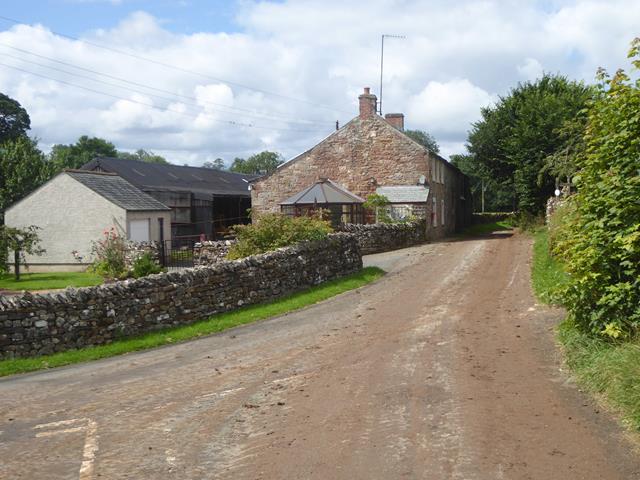
Co-Curate Page
Drybeck
- Overview About Drybeck Map Street View DRYBECK, a township, in the parish of St. Lawrence, Appleby, East ward and union, county of Westmorland, 3 miles (S.S.W.) from Appleby; containing 86 …

Co-Curate Page
Bongate
- BONGATE, a township, in the parish of St. Michael, East ward and union, county of Westmorland; containing 618 inhabitants. Extract from: A Topographical Dictionary of England comprising the several counties, …
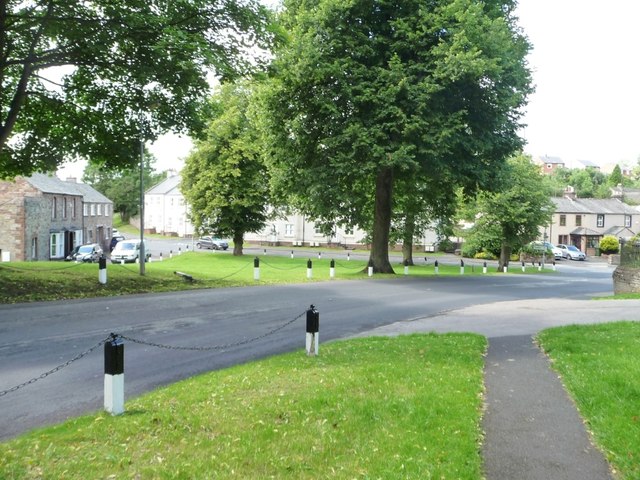
Co-Curate Page
Scattergate
- SCATTERGATE, a township, in the parish of Appleby St. Lawrence, East ward, county of Westmorland; containing 156 inhabitants. It adjoins the town of Appleby on the south, and within the …
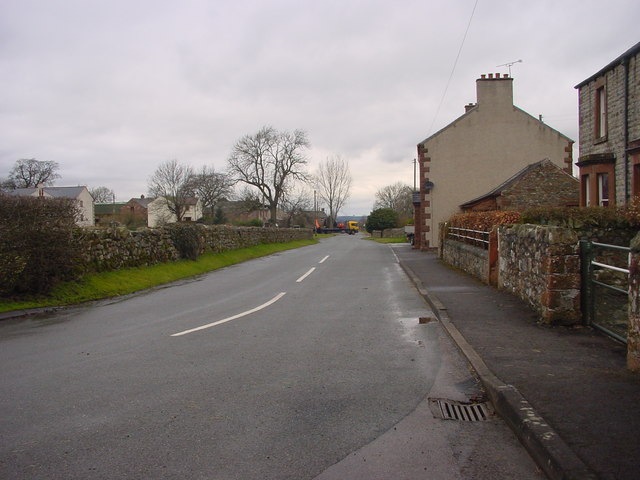
Co-Curate Page
Crackenthorpe
- Overview About Crackenthorpe Map Street View CRACKENTHORPE, a township, in the parish of Bongate, or St. Michael, Appleby, East ward and union, county of Westmorland, 2½ miles (N.W.) from Appleby; …
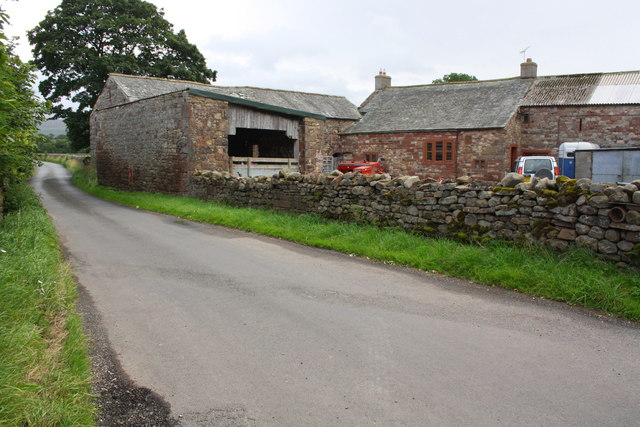
Co-Curate Page
Langton
- Overview Map Street View Langton is a hamlet in the Eden district of Cumbria, located just over a mile east of Appleby-in-Westmorland. In the past, Langton was part of a …
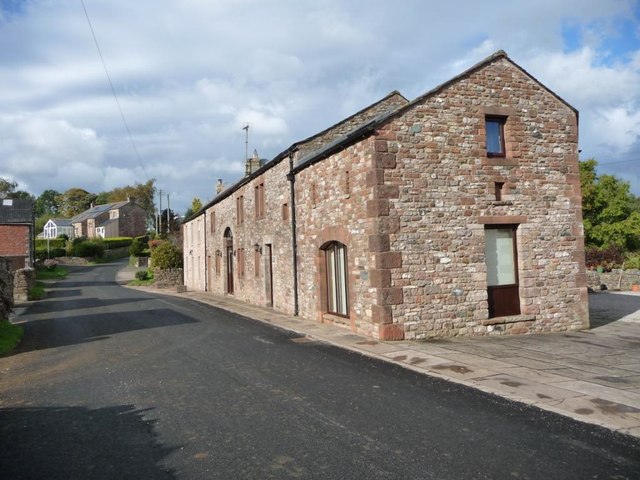
Co-Curate Page
Colby
- Overview Map Street View Colby is a village in the Eden district of Cumbria, located about 1 mile west of Appleby-in-Westmorland. It is situated by Hoff Beck (stream), which joins …


from https://openlibrary.org/books…
A topographical dictionary of England, Samuel Lewis, 7th Ed., 1848
- A topographical dictionary of England
comprising the several counties, cities, boroughs, corporate and market towns, parishes, and townships, and the islands of Guernsey, Jersey, and Man, with historical and statistical …
Added by
Simon Cotterill

Co-Curate Page
Drybeck
- Overview About Drybeck Map Street View DRYBECK, a township, in the parish of St. Lawrence, Appleby, East ward and union, county of Westmorland, 3 miles (S.S.W.) from Appleby; containing 86 …

Co-Curate Page
Bongate
- BONGATE, a township, in the parish of St. Michael, East ward and union, county of Westmorland; containing 618 inhabitants. Extract from: A Topographical Dictionary of England comprising the several counties, …

Co-Curate Page
Scattergate
- SCATTERGATE, a township, in the parish of Appleby St. Lawrence, East ward, county of Westmorland; containing 156 inhabitants. It adjoins the town of Appleby on the south, and within the …

Co-Curate Page
Crackenthorpe
- Overview About Crackenthorpe Map Street View CRACKENTHORPE, a township, in the parish of Bongate, or St. Michael, Appleby, East ward and union, county of Westmorland, 2½ miles (N.W.) from Appleby; …

Co-Curate Page
Langton
- Overview Map Street View Langton is a hamlet in the Eden district of Cumbria, located just over a mile east of Appleby-in-Westmorland. In the past, Langton was part of a …

